Off to Portsmouth
“The Queen’s Navee”
On Day 2 of my visit, Archie and I left Atherstone Mews for the 70 mile drive from London to Portsmouth. We made it 25 miles and Archie discovered that he’d left his passport at home. After a 50 round trip we were back on course and schedule.
Our plan was to visit the historic Portsmouth Dock Yard and visit several old warships. As we neared the Dock Yard we saw the Portsmouth Spinnaker Tower..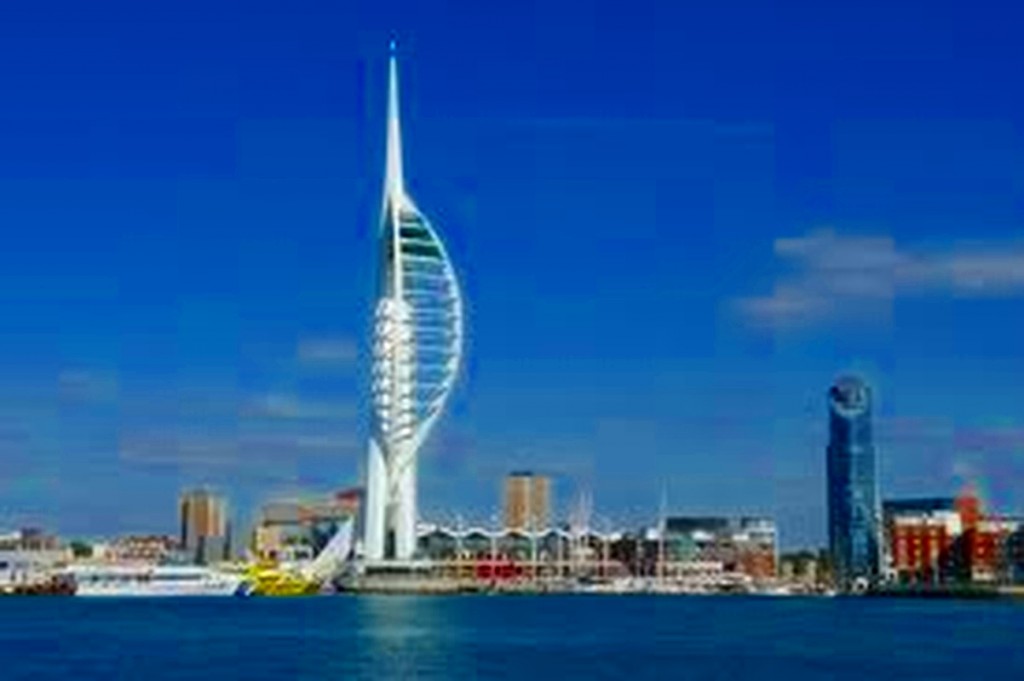 The tower, at a height of 170 m above sea level, is 2 1⁄2 times as high as Nelson’s Column in Trafalgar Square, is the tallest accessible structure in the United Kingdom outside London. The tower, with its spinnaker sail design, is visible for miles around Portsmouth,
The tower, at a height of 170 m above sea level, is 2 1⁄2 times as high as Nelson’s Column in Trafalgar Square, is the tallest accessible structure in the United Kingdom outside London. The tower, with its spinnaker sail design, is visible for miles around Portsmouth,
At the top is a triple observation deck, providing a 350° view of the city of Portsmouth, the Langstone and Portsmouth harbors, and a viewing distance of 23 miles. The highest of the three observation platforms, the crow’s nest, has a wire mesh roof, allowing visitors to be in the elements. We skipped the climb to the top.
 Here is an old picture of the Dockyard Gate. The clothes have changed but the gate is the same.
Here is an old picture of the Dockyard Gate. The clothes have changed but the gate is the same.
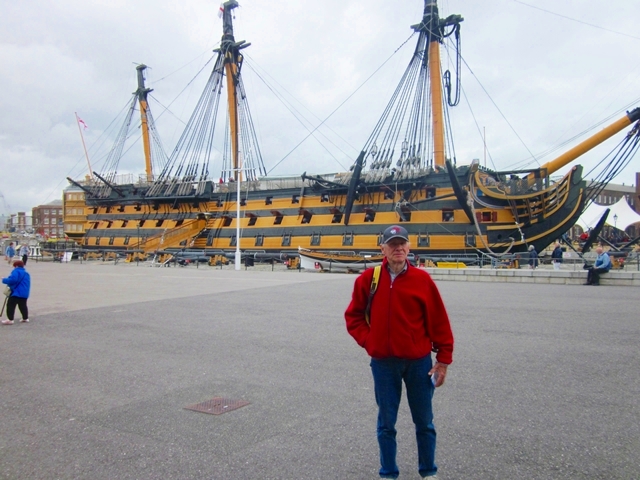 Our goal was to visit the HMS Vicrory. This was the warship on which Lord Nelson sailed during the “Battle of Trafalgar”. This sea battle on 21 October 1805 was a naval engagement fought by the British Royal Navy against the combined fleets of the French Navy and Spanish Navy in the Napoleonic Wars (1803–1815).
Our goal was to visit the HMS Vicrory. This was the warship on which Lord Nelson sailed during the “Battle of Trafalgar”. This sea battle on 21 October 1805 was a naval engagement fought by the British Royal Navy against the combined fleets of the French Navy and Spanish Navy in the Napoleonic Wars (1803–1815).
Twenty-seven British ships of the line led by Admiral Lord Nelson aboard HMS Victory defeated thirty-three French and Spanish ships of the line under French Admiral Villeneuve off the south-west coast of Spain, just west of Cape Trafalgar. The Franco-Spanish fleet lost twenty-two ships, without a single British vessel being lost.
Nelson was mortally wounded during the battle and became one of Britain’s greatest war heroes. Here is a picture of the Victory today. Most of the masts, spars, and rigging has been removed for restoration. Even so, it’s a very impressive ship!
 The Victory (built in 1759) is the worlds oldest warship still in commission even though she is in dry dock. Here is what it looks like fully rigged. The Victory is the Flagship of the First Sea Lord and is a living museum to the Georgian navy. She was a “first-rate ship” which means she carried over 100 guns. She is 227 ft 6 inches long overall and 186 feet long measured on the gun deck.
The Victory (built in 1759) is the worlds oldest warship still in commission even though she is in dry dock. Here is what it looks like fully rigged. The Victory is the Flagship of the First Sea Lord and is a living museum to the Georgian navy. She was a “first-rate ship” which means she carried over 100 guns. She is 227 ft 6 inches long overall and 186 feet long measured on the gun deck.
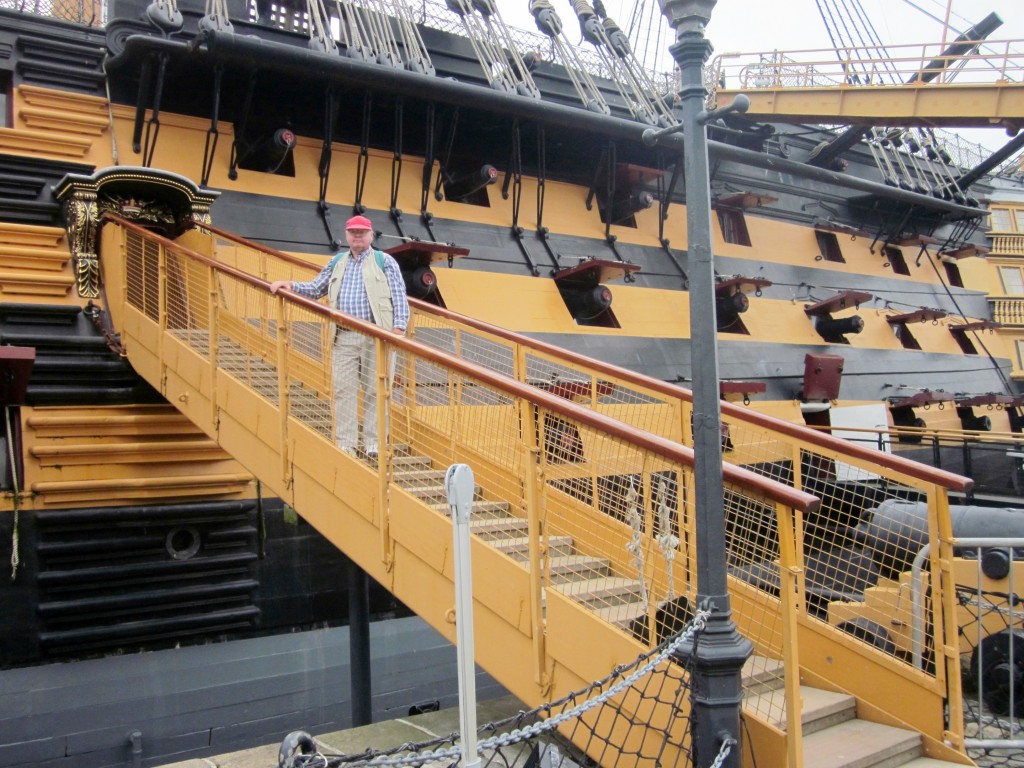 This close-up shows the massive the ship’s hull . The hull is about a foot thick almost all oak!
This close-up shows the massive the ship’s hull . The hull is about a foot thick almost all oak!
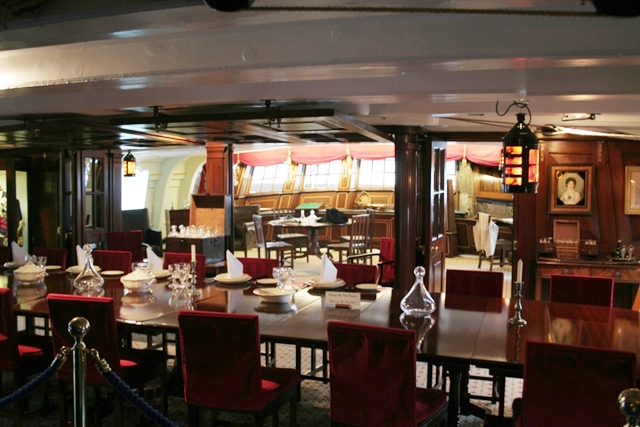 Here is the Ward Room and the Admirals Day Cabin in the stern of the ship. It is pretty posh and is still used today on ceremonial occasions.
Here is the Ward Room and the Admirals Day Cabin in the stern of the ship. It is pretty posh and is still used today on ceremonial occasions.
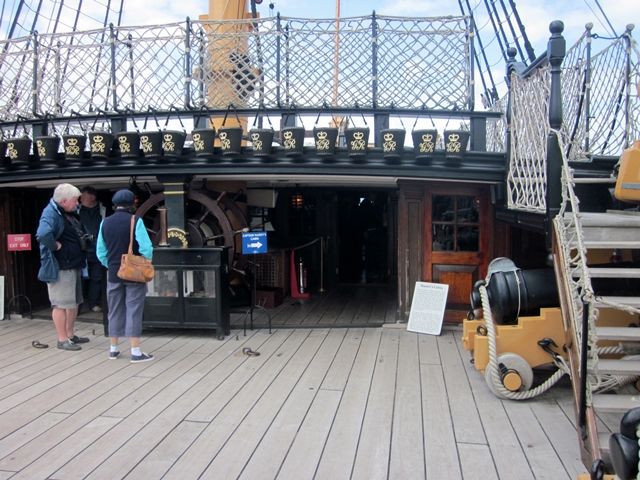 This is the Victory quarter deck. The Admiral’s Quarters are entered here. This is where Lord Nelson fell after being hit by a bullet from a French Marine on a close by ship.
This is the Victory quarter deck. The Admiral’s Quarters are entered here. This is where Lord Nelson fell after being hit by a bullet from a French Marine on a close by ship.
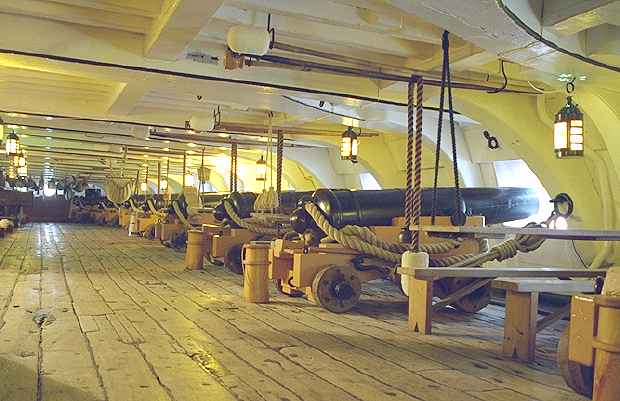 This is the upper gun deck below the quarter deck.. It has 30 – 1.7 ton short 12 pound cannons (The cannon balls weighed 12 pounds). Interestingly, most of the cannon you see here are replicas made of fiberglass.This is necessary because the ship cannot be placed in dry dock with her armaments on board. The weight would damage the structure without the support of sea water. Not much good in a real fight!
This is the upper gun deck below the quarter deck.. It has 30 – 1.7 ton short 12 pound cannons (The cannon balls weighed 12 pounds). Interestingly, most of the cannon you see here are replicas made of fiberglass.This is necessary because the ship cannot be placed in dry dock with her armaments on board. The weight would damage the structure without the support of sea water. Not much good in a real fight!
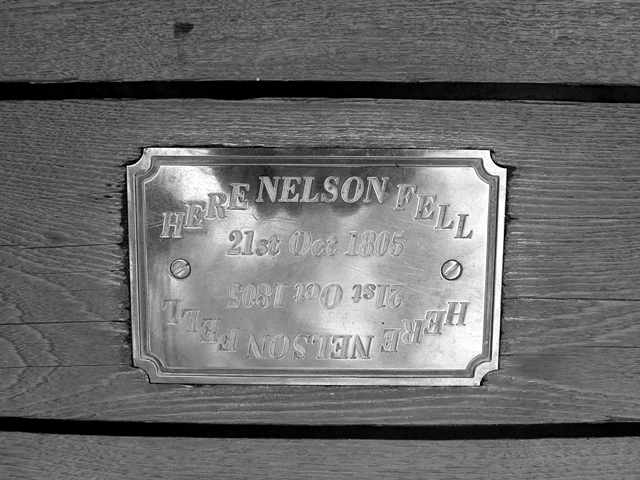 Here is the plaque on the quarter deck that shows where Lord Nelson fell.
Here is the plaque on the quarter deck that shows where Lord Nelson fell.
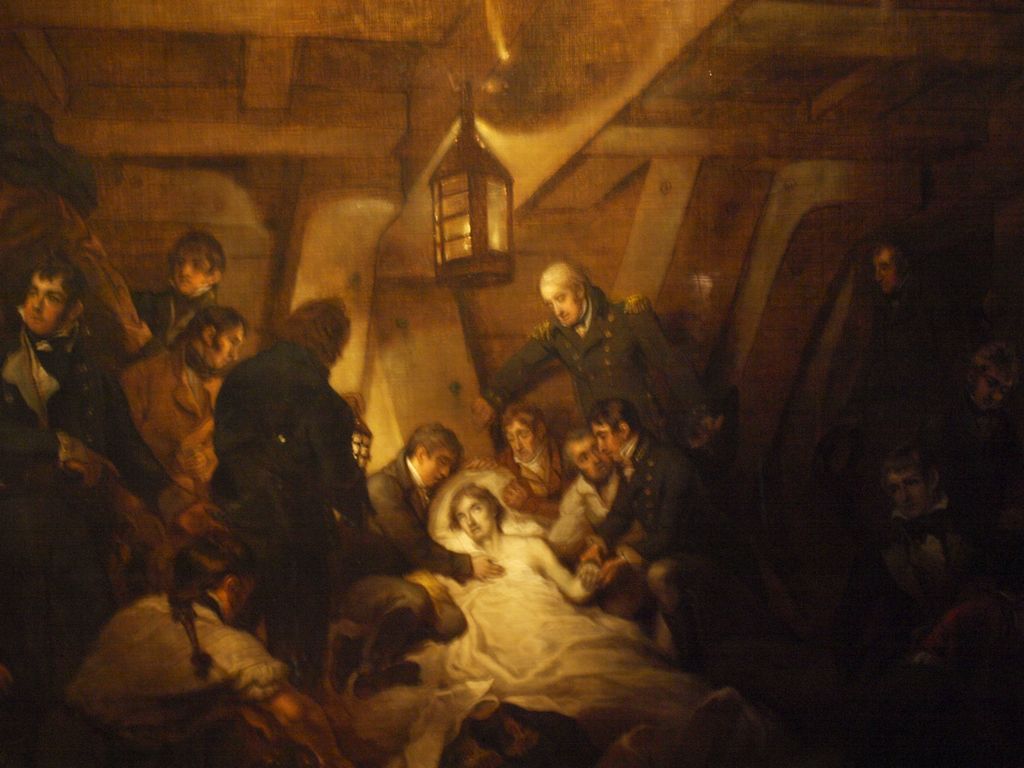 This is an artist’s (Arthur William Devis) rendering of Nelson’s death on the orlop (lowest – below the water line) deck. We visited the orlop deck and I banged my head several times because it is only about 5 feet high. Not like the painting…
This is an artist’s (Arthur William Devis) rendering of Nelson’s death on the orlop (lowest – below the water line) deck. We visited the orlop deck and I banged my head several times because it is only about 5 feet high. Not like the painting…
We disembarked the Victory and I took one last picture of the massive bow showing the complexity of curves that must have driven the shipwrights nuts!
PS Many of you may know that the toilets for the crew on the old sailing ships was on the bow (or “head”). There were two heads on this side of the bow: An enclosed round one for Petty Officers and an uncovered bench with a couple of holes called the “seats of ease” for the rest of the crew. Everything from these heads dropped through the framework you see here. Of course, the Officers had much nicer enclosed heads back aft.
After visiting the Victory, we went next door to the Mary Rose Museum.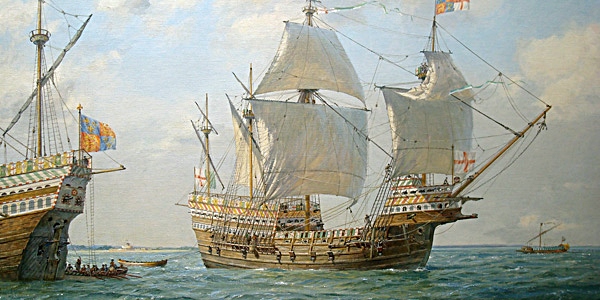 This is what it looked like when she was afloat:
This is what it looked like when she was afloat:
The Mary Rose was built in 1510 and was a carrack-type warship of the English Tudor navy of King Henry VIII. After serving for 33 years in several wars against France, Scotland, and Brittany and after being substantially rebuilt in 1536, she saw her last action on 19 July 1545. While leading the attack on the galleys of a French invasion fleet, she sank in the Solent, the straits between Portsmouth and the Isle of Wight. The wreck of the Mary Rose was rediscovered in 1971 and salvaged in 1982.
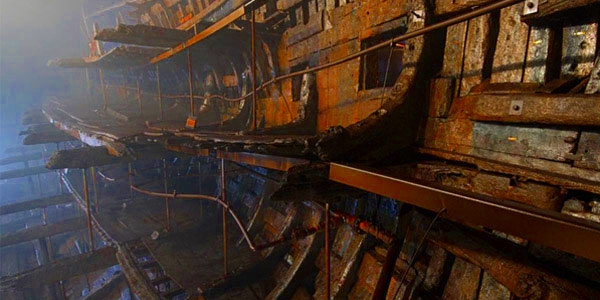 This is what was salvaged. It is a section of the hull that was buried in the silt for almost 450 years. There were also a lot of artifacts and some human remains found in the wreckage.
This is what was salvaged. It is a section of the hull that was buried in the silt for almost 450 years. There were also a lot of artifacts and some human remains found in the wreckage.
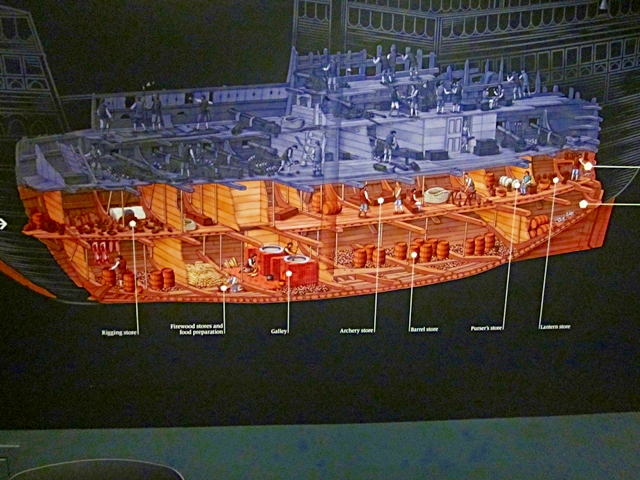 This shows the section of the hull that was salvaged in relation to the whole hull.
This shows the section of the hull that was salvaged in relation to the whole hull.
 This is a recreation of a gun deck with some of the original cannons.
This is a recreation of a gun deck with some of the original cannons.
 After leaving the Mary Rose museum we stopped at the HMS Warrior. The HMS Warrior was built for the Royal Navy in 1859–61.She is 420 feet long (versus 227 for the Victory and about 100 for the Mary Rose). She and her sister ship HMS Black Prince were the first armor plated, iron-hulled warships The Warrior spent her active career with the English Channel Fleet and was hulked (dis-masted and stripped) in 1883 after having been in reserve since 1875.
After leaving the Mary Rose museum we stopped at the HMS Warrior. The HMS Warrior was built for the Royal Navy in 1859–61.She is 420 feet long (versus 227 for the Victory and about 100 for the Mary Rose). She and her sister ship HMS Black Prince were the first armor plated, iron-hulled warships The Warrior spent her active career with the English Channel Fleet and was hulked (dis-masted and stripped) in 1883 after having been in reserve since 1875.
She served as a store ship and depot ship before she was assigned to Royal Navy’s torpedo training school in 1904. The ship was converted into a floating oil jetty in 1927 and remained in that role until 1979 when restoration began. Listed as part of the National Historic Fleet, she is now a beautifully restored museum ship.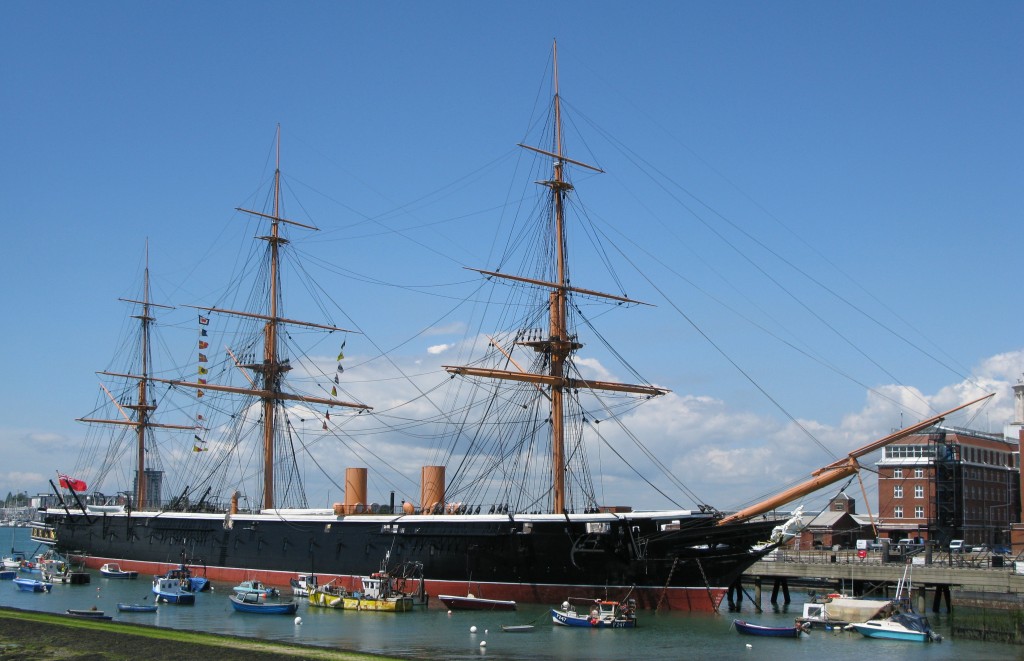 The Warrior was unique for her day. She was made of riveted iron plates, had masts and sails, and was also steam powered (note the smoke stacks). She never saw any naval action and she was so unwieldy that there were 4 helms on 2 decks and it took 8 men to steer her
The Warrior was unique for her day. She was made of riveted iron plates, had masts and sails, and was also steam powered (note the smoke stacks). She never saw any naval action and she was so unwieldy that there were 4 helms on 2 decks and it took 8 men to steer her
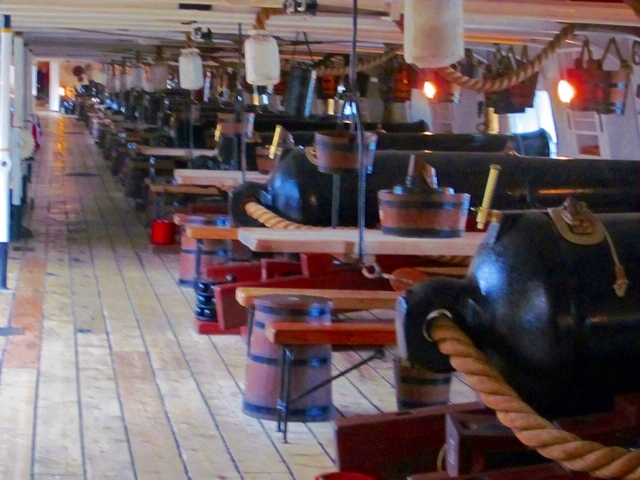 The gun deck of the Warrior looked a lot like the gun deck of the Victory although the Warrior was 100 years newer.
The gun deck of the Warrior looked a lot like the gun deck of the Victory although the Warrior was 100 years newer.
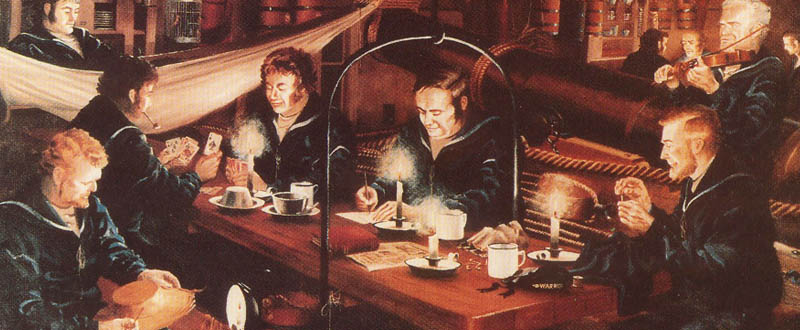 The crew still ate and slept at their guns as they had done 100 years earlier.
The crew still ate and slept at their guns as they had done 100 years earlier.
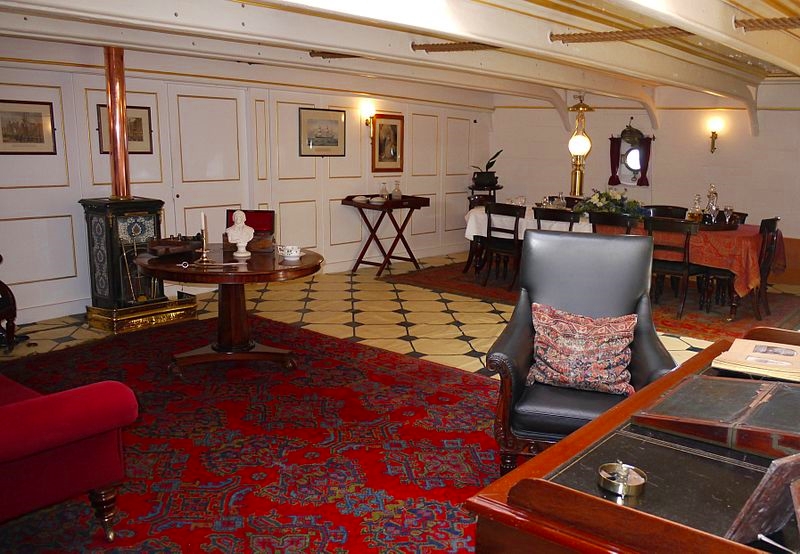 As you can see, the Captain had it a bit easier.
As you can see, the Captain had it a bit easier.
Here are the two helms. One on the main deck and one on the gun deck below. Four men would be on each side for a total of 16 men in severe conditions.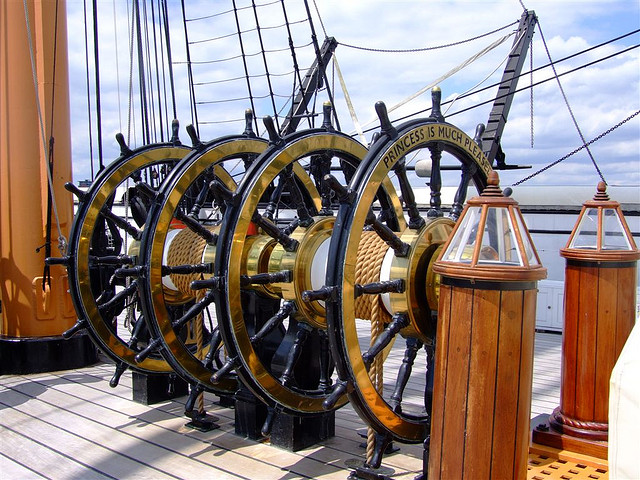
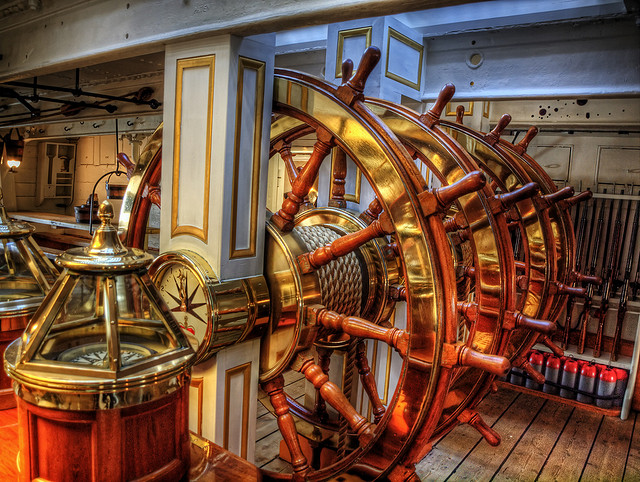
Two final shots of the Warrior: The one of the coal fired boiler rooms and a complicated view of the steam engine (it’s so complicated, even I don’t know what it is).
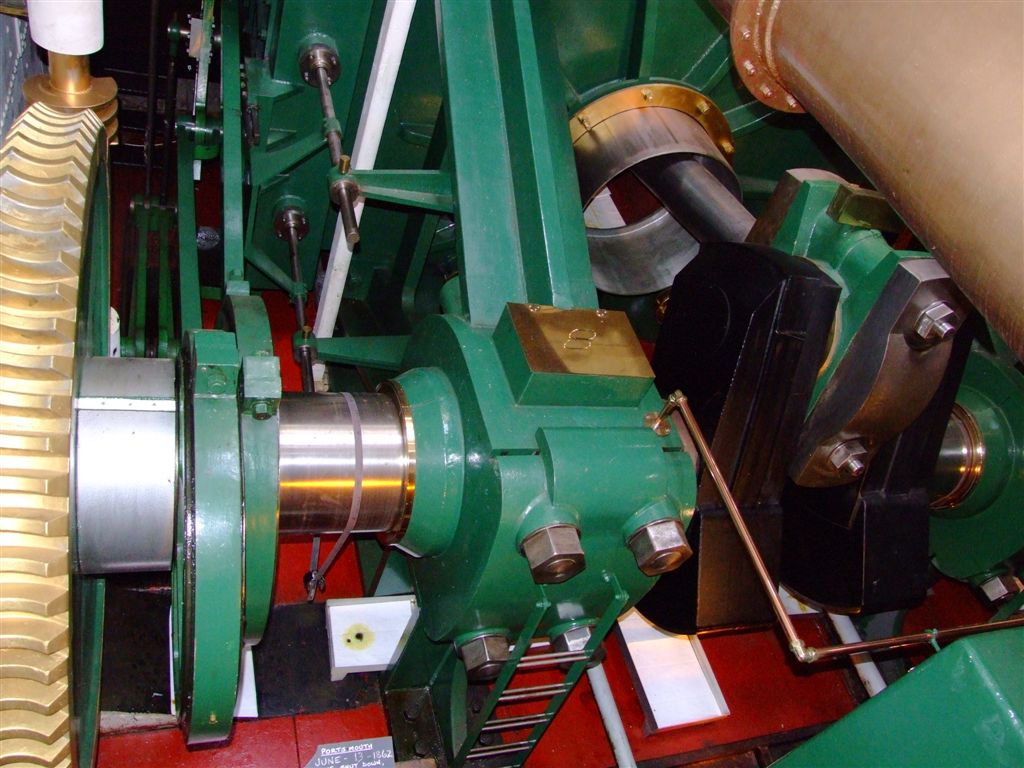
We now leave the Dock Yard and head to the Portsmouth to Le Havre Ferry Terminal.

